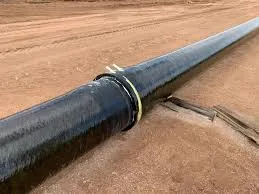
-
 Afrikaans
Afrikaans -
 Albanian
Albanian -
 Amharic
Amharic -
 Arabic
Arabic -
 Armenian
Armenian -
 Azerbaijani
Azerbaijani -
 Basque
Basque -
 Belarusian
Belarusian -
 Bengali
Bengali -
 Bosnian
Bosnian -
 Bulgarian
Bulgarian -
 Catalan
Catalan -
 Cebuano
Cebuano -
 China
China -
 China (Taiwan)
China (Taiwan) -
 Corsican
Corsican -
 Croatian
Croatian -
 Czech
Czech -
 Danish
Danish -
 Dutch
Dutch -
 English
English -
 Esperanto
Esperanto -
 Estonian
Estonian -
 Finnish
Finnish -
 French
French -
 Frisian
Frisian -
 Galician
Galician -
 Georgian
Georgian -
 German
German -
 Greek
Greek -
 Gujarati
Gujarati -
 Haitian Creole
Haitian Creole -
 hausa
hausa -
 hawaiian
hawaiian -
 Hebrew
Hebrew -
 Hindi
Hindi -
 Miao
Miao -
 Hungarian
Hungarian -
 Icelandic
Icelandic -
 igbo
igbo -
 Indonesian
Indonesian -
 irish
irish -
 Italian
Italian -
 Japanese
Japanese -
 Javanese
Javanese -
 Kannada
Kannada -
 kazakh
kazakh -
 Khmer
Khmer -
 Rwandese
Rwandese -
 Korean
Korean -
 Kurdish
Kurdish -
 Kyrgyz
Kyrgyz -
 Lao
Lao -
 Latin
Latin -
 Latvian
Latvian -
 Lithuanian
Lithuanian -
 Luxembourgish
Luxembourgish -
 Macedonian
Macedonian -
 Malgashi
Malgashi -
 Malay
Malay -
 Malayalam
Malayalam -
 Maltese
Maltese -
 Maori
Maori -
 Marathi
Marathi -
 Mongolian
Mongolian -
 Myanmar
Myanmar -
 Nepali
Nepali -
 Norwegian
Norwegian -
 Norwegian
Norwegian -
 Occitan
Occitan -
 Pashto
Pashto -
 Persian
Persian -
 Polish
Polish -
 Portuguese
Portuguese -
 Punjabi
Punjabi -
 Romanian
Romanian -
 Russian
Russian -
 Samoan
Samoan -
 Scottish Gaelic
Scottish Gaelic -
 Serbian
Serbian -
 Sesotho
Sesotho -
 Shona
Shona -
 Sindhi
Sindhi -
 Sinhala
Sinhala -
 Slovak
Slovak -
 Slovenian
Slovenian -
 Somali
Somali -
 Spanish
Spanish -
 Sundanese
Sundanese -
 Swahili
Swahili -
 Swedish
Swedish -
 Tagalog
Tagalog -
 Tajik
Tajik -
 Tamil
Tamil -
 Tatar
Tatar -
 Telugu
Telugu -
 Thai
Thai -
 Turkish
Turkish -
 Turkmen
Turkmen -
 Ukrainian
Ukrainian -
 Urdu
Urdu -
 Uighur
Uighur -
 Uzbek
Uzbek -
 Vietnamese
Vietnamese -
 Welsh
Welsh -
 Bantu
Bantu -
 Yiddish
Yiddish -
 Yoruba
Yoruba -
 Zulu
Zulu
fiberglass settler
The Role of Fiberglass Settler in Wastewater Treatment
In the realm of wastewater treatment, various technologies and materials are employed to enhance efficiency and effectiveness. Among these, the fiberglass settler has emerged as a vital component, playing a pivotal role in the clarification of effluent. This innovative apparatus is designed to facilitate the separation of solids from liquids, thereby improving the quality of treated water before it is released back into the environment.
A fiberglass settler is constructed from high-quality fiberglass, a composite material that offers several advantages in wastewater treatment applications. One of the primary benefits of using fiberglass is its resistance to corrosion. Unlike traditional materials such as steel or concrete, fiberglass does not rust or degrade when exposed to harsh chemicals or high-salinity environments. This durability ensures a longer lifespan and lower maintenance costs, making fiberglass settlers an economically attractive choice for wastewater treatment facilities.
The operation of a fiberglass settler is relatively straightforward. Wastewater enters the settler, where it is subjected to gravitational forces that promote the sedimentation of solid particles. The design of the settler typically includes a series of baffles or chambers that optimize flow patterns, allowing solids to settle at the bottom while the clarified liquid flows out through the top. This process not only reduces the volume of suspended solids but also enhances the overall clarity and quality of the effluent.
fiberglass settler

One of the critical applications of fiberglass settlers is in the pretreatment phase of wastewater management. By effectively removing a significant portion of solids before further treatment steps—such as biological treatment or filtration—fiberglass settlers help to minimize the burden on downstream processes. This preemptive action can lead to increased efficiency in the treatment plant, lower operational costs, and improved compliance with regulatory standards for effluent quality.
In addition to their use in municipal wastewater treatment plants, fiberglass settlers are also gaining popularity in industrial applications. Industries that generate large volumes of wastewater—such as food processing, pharmaceuticals, and petrochemicals—benefit from the implementation of fiberglass settlers to manage their effluent effectively. By ensuring that solid waste is adequately removed, these industries can mitigate environmental risks and adhere to stringent discharge regulations.
Another noteworthy advantage of fiberglass settlers is their modular design. They can be tailored to fit various operational scales, from small scale installations in rural areas to large, complex systems in urban settings. This versatility allows for the effective integration of fiberglass settlers into existing wastewater treatment infrastructures without major overhauls.
In conclusion, fiberglass settlers represent a significant advancement in wastewater treatment technology. Their robust construction, efficient design, and versatility make them an ideal choice for effective solids separation in both municipal and industrial applications. As global water scarcity and pollution continue to pose challenges, the adoption of innovative solutions like fiberglass settlers will be crucial in ensuring the sustainable management of water resources and the protection of our environment. Through their ability to enhance treatment processes and improve water quality, fiberglass settlers play an indispensable role in shaping a greener future.
Latest news
-
Exploring the Benefits of Top Hammer Drifter Rods for Enhanced Drilling PerformanceNewsJun.10,2025
-
High-Precision Fiberglass Winding Machine for GRP/FRP Pipe Production – Reliable & Efficient SolutionsNewsJun.10,2025
-
FRP Pipes & Fittings for Shipbuilding - Corrosion-Resistant & LightweightNewsJun.09,2025
-
Premium FRP Flooring Solutions Durable & Slip-ResistantNewsJun.09,2025
-
Premium Fiberglass Rectangular Tanks Durable & Lightweight SolutionNewsJun.09,2025
-
Tapered Drill String Design Guide Durable Performance & UsesNewsJun.09,2025









